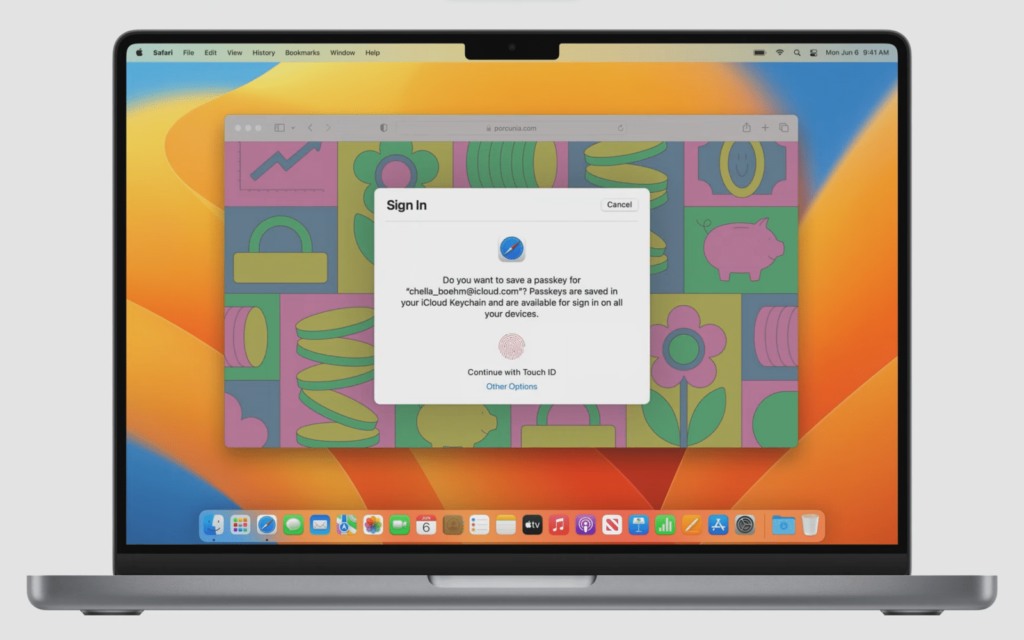Apple’s WWDC event last night featured a host of notable announcements. Along with the mostly bland news of operating system updates, came the company’s new M2 chip and a new MacBook Air and MacBook Pro 13in. One of those operating system updates was a bit more flavourful than the rest. Like, that one chip stuck in the corner of the bag that catches you by surprise.
Last night, Apple was the first of the big tech companies to show the world what a passwordless future might look like and how it would work.
Passkeys will replace passwords soon (hopefully)
Last month on World Password Day, 5 May, the big tech companies (Apple, Google, and Microsoft) got together to announce plans for a new authentication method that uses passkeys to replace passwords.
Although passkeys just sound like passwords with extra steps, they work in a slightly different way. Passkeys use the biometric data stored on your device. Instead of placing the onus on the user to remember their password and input it correctly, your device will do that.
In practice, when you need to login to a website on your laptop the site will send an authentication request to your phone. You’ll use your biometric credentials and the site will use that instead of “Passw0rd123” to create a passkey and authenticate you.
This passkey will be site-specific, so you’ll need to repeat that process whenever you need to login. That might sound like a lot of work on your part, but then so does having to remember a different password for all of those sites. You guys do that, right?
Apple showed off how this will work on its side during its presentation. Your passkey data will also sync with your iCloud keychain so it’ll be accessible across all your Apple products.
Because Microsoft and Google are involved in this as well, your passkeys should work across all platforms and devices. That’s the idea, anyway.
Of course, this change isn’t going to happen overnight. The round to a passwordless future will be long and there will be many questions along the way. Like, how would you login if your phone is stolen? Our guess would be that, because your thumb or face doesn’t change all that much, you’ll be able to use one or both again to pick up where you left off. We’re sure the smart people at Apple, Google, and Microsoft have thought of that.




